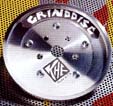| Bart de Jong, www.fatbmx.com, february 2006: For the first 15 years of BMX freestyle, 44-16 was the gearing of choice. It was good enough to sprint towards a ramp and good enough to ride away from a flatland trick. Over the last years this has changed enormously. If you ride freestyle and run the 44-16 gear, you are looking pretty old school. It's safe to say that 44-16 is a thing of the past. Flatlanders went for smaller sprockets (in the front and in the read) on their customized coaster hubs to make room for scuffing and spinning. The weight police has demanded small sprocket use among park riders. Smaller sprockets mean less material and a shorter chain. Wow, that's less weight. For the longest time freewheels didn't go smaller than size 14. With cassette hubs taking over it's possible to get a 9T cog in the back. Prices of cassette hubs have come down and can be found on complete bikes these days. This has opened a market for smaller front sprockets. |

